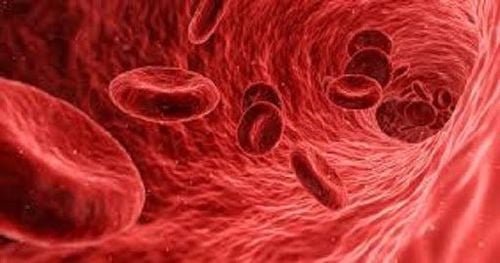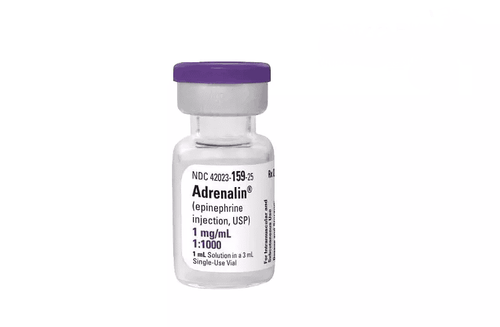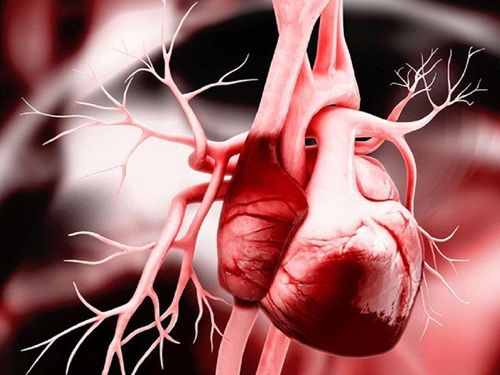This is an automatically translated article.
The article was professionally consulted by Specialist Doctor I Huynh Kim Long - Emergency Resuscitation Doctor - Emergency Resuscitation Department - Vinmec Da Nang International General Hospital.Hypovolemic shock is an emergency in which a person loses a large amount of blood or fluid, about 20% of the total body fluid. Hypovolemic hypovolemia causes the body's organ systems not to be nourished, threatening the patient's life, so emergency methods of hypovolemic shock need to be performed promptly to save the patient's life. core.
1. Hypovolemic shock
Shock is defined as a phenomenon where the blood flow that supplies oxygen to the body's organs is reduced, making the metabolic reactions in these organs impossible, affecting the function of many body systems. important in the patient's body.Hypovolemic shock is shock caused by a sudden decrease in the volume of fluid or blood in the circulatory system that causes many serious consequences for the patient's health, including decreased perfusion to the body. Organizations in the body due to lack of oxygen supply to the blood, disturbances in the metabolism of cells in the body, damage to organ systems due to lack of oxygen for a long time, and most seriously, death. death from shock.
The most common cause of hypovolemic shock is heavy bleeding, some other causes can be a decrease or loss of large amounts of plasma and water volume due to some diseases from the gastrointestinal tract, diseases kidney disease or skin disease. Shocking hypovolemia may be more severe if the patient has underlying medical conditions such as diabetes mellitus, renal disease, or cardiovascular disease. Because it causes very serious and life-threatening complications, hypovolemia leading to shock needs to be detected early for timely treatment to compensate for the lost volume correctly and safely.
There are many ways to classify hypovolemic shock including:
Classification by cause of shock: Includes hemorrhagic shock arising from trauma or gastrointestinal bleeding and non-volemic shock accompanied by blood loss from a group of gastrointestinal symptoms such as vomiting, loose stools, intestinal obstruction or patients undergoing gastric suction procedures, or diseases such as diabetes insipidus, osmotic polyuria...
Stools Classification by severity: Includes mild (volume of total blood loss < 20%), moderate (volume of total blood loss is between 20% - 40%) and severe (volume of total blood loss is between 20% and 40%). > 40%).
Depending on the degree of volume loss as well as the rate of volume loss, the hemodynamic parameters of the previous patient, the ability as well as the intensity of recovery after hypovolemia is very different in each case specific case. If normal, the patient is in good health, hemodynamically stable, then if hypovolemia occurs only about 20% - 30%. In contrast, in normal patients with some hypovolemic problem or chronic ischemic disease, pathology related to heart and lung damage, hypovolemic shock may occur. when the body loses a very small amount of fluid.

Symptoms of peripheral vasoconstriction such as skin, extremities, lips, cold ears, purple, fingernails appear pale but very slowly red as usual. because of reduced re-filling. The pulse is fast, light, difficult to catch or not catch. Systolic blood pressure <90 mmHg or congested. Tachypnea Oliguria Struggling, confusion, delirium followed by mental lethargy and finally coma. The symptoms of metabolic acidosis such as the first time patients often have respiratory alkalosis, then will turn to metabolic acidosis. Subclinical symptoms with diagnostic value in hypovolemic shock are:
Blood sodium concentration increases, blood potassium concentration decreases pH, PaCO2, PaO2 and Bicarbonate in arterial blood gas Red blood cells and Hematocrit usually decrease if the patient is in shock due to hypovolemic shock
2. First aid for hypovolemia
In hypovolemic emergency, the treatment measures are taken for two main purposes: resuscitation of the patient and treatment of the cause leading to hypovolemia.Some of the key principles in the emergency management of hypovolaemia are:
Assess the patient's vitals Identify the cause of hypovolemia quickly Perform some laboratory tests of muscle , do a blood type test in case the patient goes into hemorrhagic shock. Replace infusion as quickly as possible. For the patient's resuscitation, it is necessary to note a number of issues as follows:
Perform essential resuscitation movements on the patient such as placing the patient in a low lying position, paying attention to the risk of aspiration. Patients breathe nasal oxygen at a frequency of 2-6 times/minute, if the patient has regurgitation into the lungs or has respiratory failure and impaired consciousness, then endotracheal intubation is indicated, two solid intravenous lines are placed and large, place a central venous catheter, measure CVP in patients with heart failure, keep warm, place urinary catheter, draw blood for testing, measure electrocardiogram. Prioritize fluid resuscitation and hemodynamic resuscitation by administering 0.9% sodium chloride infusion, Ringer lactate 500ml/15 minutes by rapid infusion until blood pressure recovers from 70mmHg to 80mmHg, then start reducing the infusion rate. Colloidal infusion after isotonic saline was 50 ml/kg, but the patient still had signs of hypovolemic shock. A very important thing in the matter of infusion is the need to closely monitor the patient's vital signs during the infusion. In patients with hemorrhagic shock, an urgent blood transfusion is indicated. For the treatment of the cause of hypovolemic shock, it is necessary to perform hemostasis, sclerotherapy for hemostasis for the cause of esophageal varices. In addition, gastrectomy, Blakemore catheterization for infusion of Terlipressin Vasopressin solution, splenectomy or hysterectomy can also be used.

Currently, Vinmec International General Hospital is one of the leading prestigious hospitals in the country, trusted by a large number of patients for medical examination and treatment, not only equipped with modern and advanced equipment. the most advanced in the country as well as in the region. The team of emergency doctors and nurses at the Department are professionally trained, able to receive and handle urgent cases of serious patients. Continue to coordinate monitoring and treatment in the ICU with modern machines such as: PiCCO invasive hemodynamic probe, Prismaflex continuous dialysis machine, GE Carescape R860 ventilator...
The department has 6 ultrasound room, 4 DR X-ray rooms (1 full-axis machine, 1 intensifier, 1 synthesizer and 1 mammogram), 2 DR mobile X-ray machines, 2 computed tomography rooms multi-receiver array (1 128-series and 1 16-series), 2 Magnetic resonance imaging rooms (1 3 Tesla machine and 1 1.5 Tesla machine), 1 2 plane interventional angiography room and 1 densitometry room Vinmec is also a place to gather a team of experienced doctors and nurses who will greatly assist in the diagnosis and early detection of abnormal signs of the patient's body. The space is designed according to 5-star hotel standards, giving patients the most comfort, friendliness and peace of mind.
Please dial HOTLINE for more information or register for an appointment HERE. Download MyVinmec app to make appointments faster and to manage your bookings easily.














